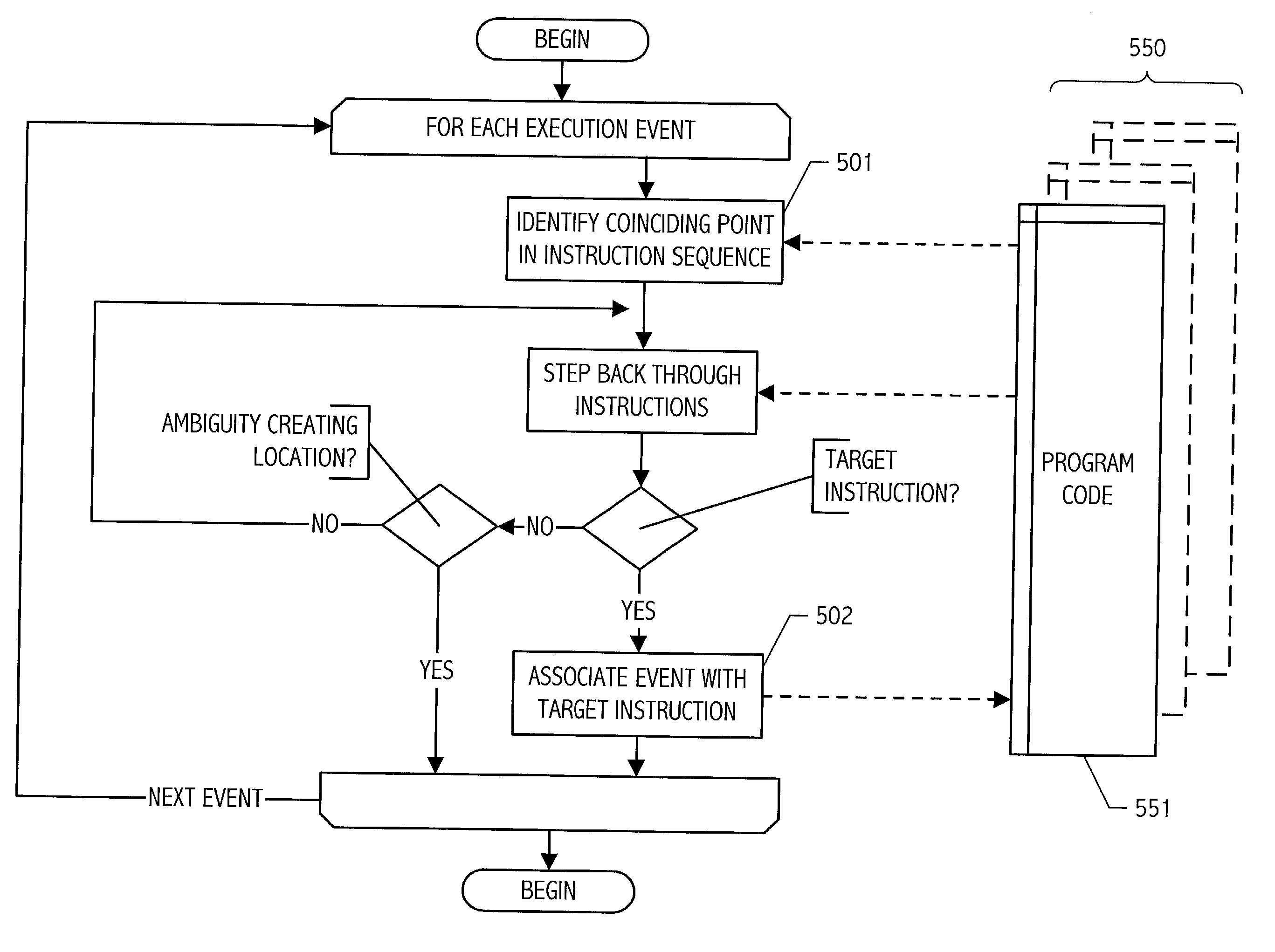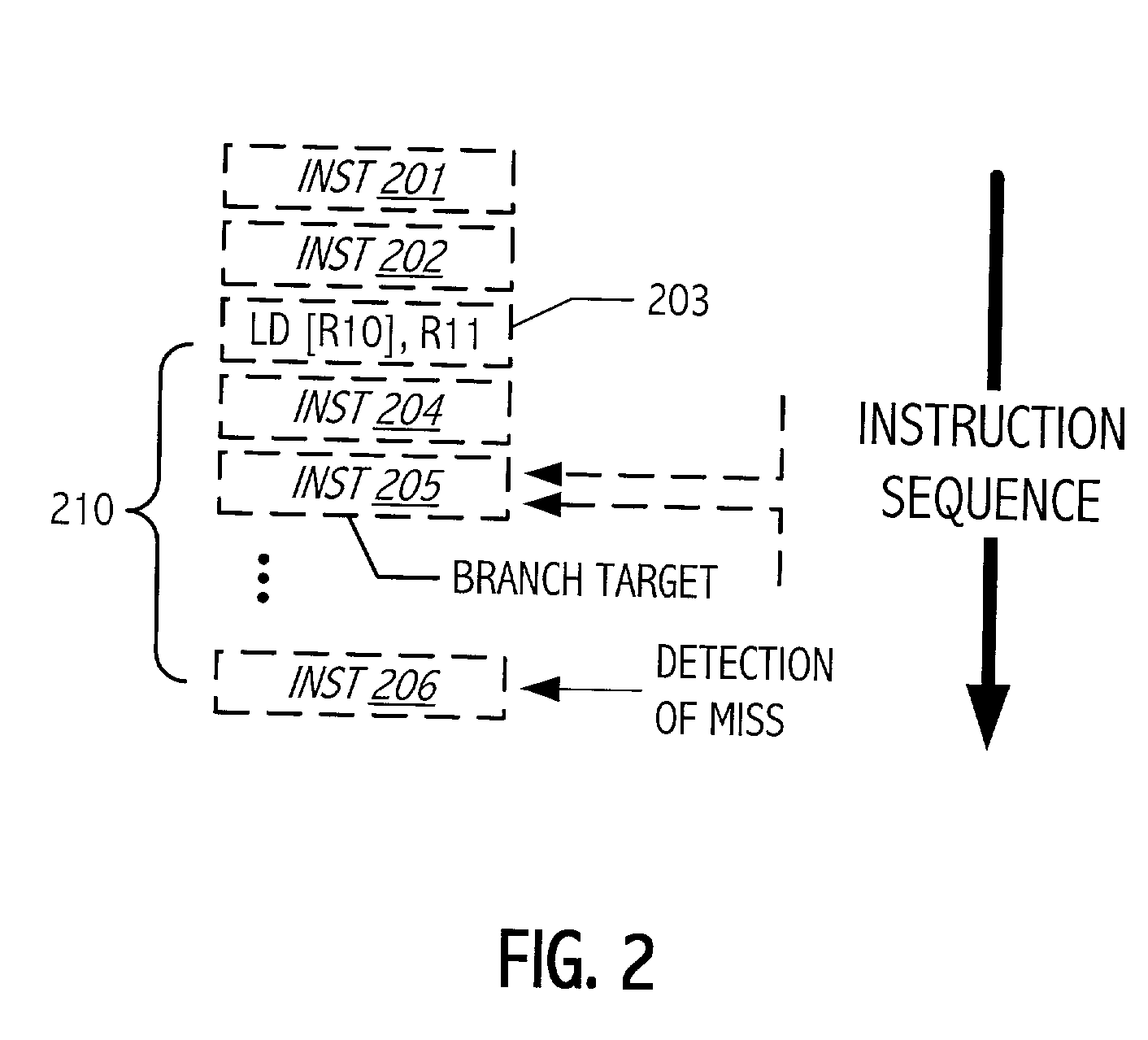Technique for associating instructions with execution events
a technology of execution events and instructions, applied in the direction of instruments, computations using denominational number representations, program control, etc., can solve the problems of affecting the behavior of the program code being sampled, affecting the accuracy of execution events, and difficulty in precise identification of associated instructions,
- Summary
- Abstract
- Description
- Claims
- Application Information
AI Technical Summary
Problems solved by technology
Method used
Image
Examples
Embodiment Construction
)
[0018] The description that follows includes exemplary systems, methods, techniques, instruction sequences and computer program products that embody techniques of the present invention. In some realizations, instruction sequences and computer program products in accordance with the present invention are made using such techniques. For purposes of description, certain aspects of the present invention are detailed in the context of instruction sequences that include load-type memory access instructions with which cache miss execution events may be associated using backtracking techniques. More generally, other target instructions or operations may be associated with execution events using techniques of the present invention. In much of the description that follows, branch target locations are illustrative instances of the general class of ambiguity creating locations. However, more generally, other program constructs may create ambiguity when interposed between a target instruction o...
PUM
 Login to View More
Login to View More Abstract
Description
Claims
Application Information
 Login to View More
Login to View More - R&D
- Intellectual Property
- Life Sciences
- Materials
- Tech Scout
- Unparalleled Data Quality
- Higher Quality Content
- 60% Fewer Hallucinations
Browse by: Latest US Patents, China's latest patents, Technical Efficacy Thesaurus, Application Domain, Technology Topic, Popular Technical Reports.
© 2025 PatSnap. All rights reserved.Legal|Privacy policy|Modern Slavery Act Transparency Statement|Sitemap|About US| Contact US: help@patsnap.com



